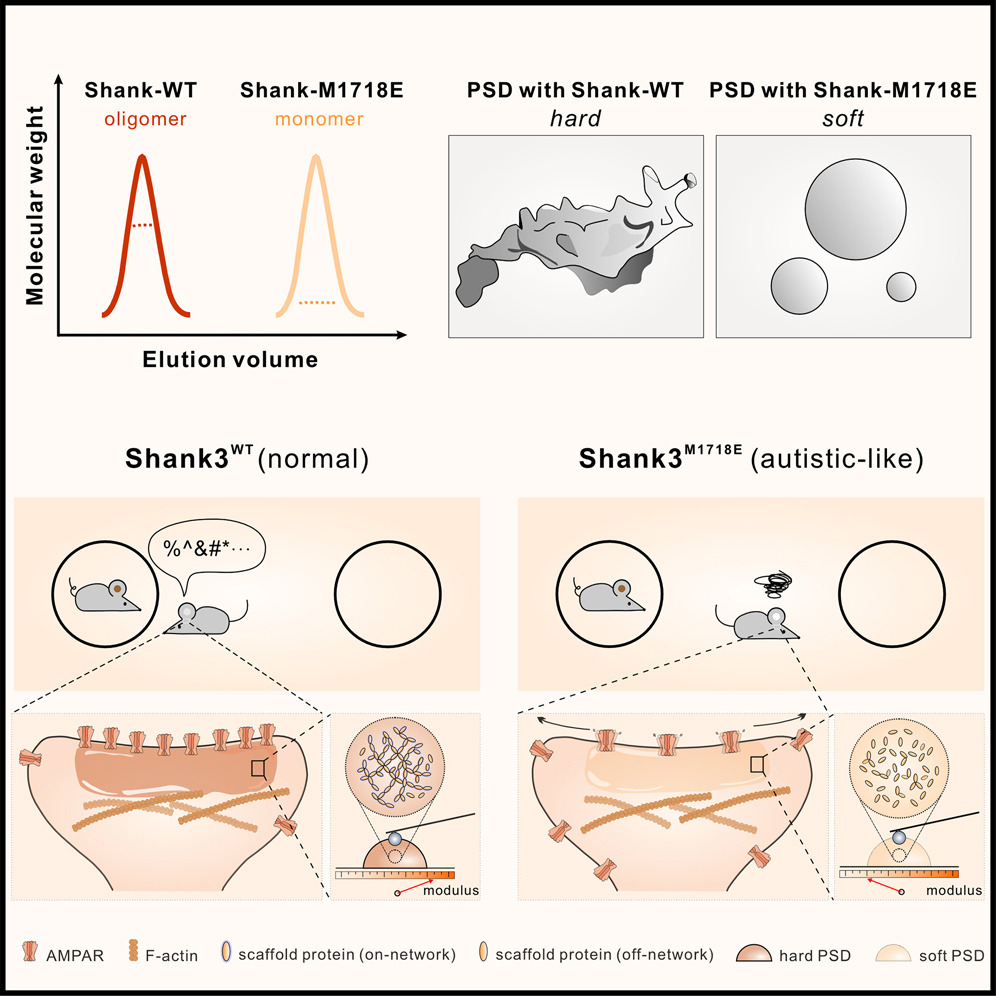Neuronal Synapses: Microscale Signal Processing Machineries Formed by Phase Separation?
2018.04.12Feng, Z., Zeng, M., Chen, X., and Zhang, M.(2018). Biochemistry, 57(17), pp 2530–2539.
The organization principles underlying non-membrane-bound organelles have started to unravel in the past 10 years. A new biophysical model known as biomolecular condensates has been proposed to explain many aspects of membraneless organelle assembly and regulation. Neurons are extremely complex, and each neuron can contain tens of thousands of synapses, building an extensive neuronal circuit. Intriguingly, neuronal synapses are characterized by specialized compartmentalization, where highly enriched supramolecular complexes are semi-membrane-enclosed into submicrometer-sized signal processing compartments. Recent findings have demonstrated that this postsynaptic density may be driven by phase separation, and an increasing number of studies of membraneless compartments have shed light on the important molecular features shared by these organelles. Here, we discuss the unique morphology and composition of synapses and consider how synaptic assembly might be driven by phase separation. Understanding the molecular behavior of this semi-membrane-bound compartment could ultimately help to explain the mechanistic details underlying synaptic transmission and plasticity, as well as the numerous brain disorders caused by synaptic defects.
- Recommend
-
2025-10-22
IQSEC2/BRAG1 may modulate postsynaptic density assembly through Ca2+-induced phase separation.
-
2025-08-22

Shank3 oligomerization governs material properties of the postsynaptic density condensate and synaptic plasticity.
-
2025-08-21
Modulating synaptic glutamate receptors by targeting network nodes of the postsynaptic density condensate.
-
2025-08-19
Current practices in the study of biomolecular condensates: a community comment.
-
2025-06-10
Phase separation instead of binding strength determines target specificities of MAGUKs.

